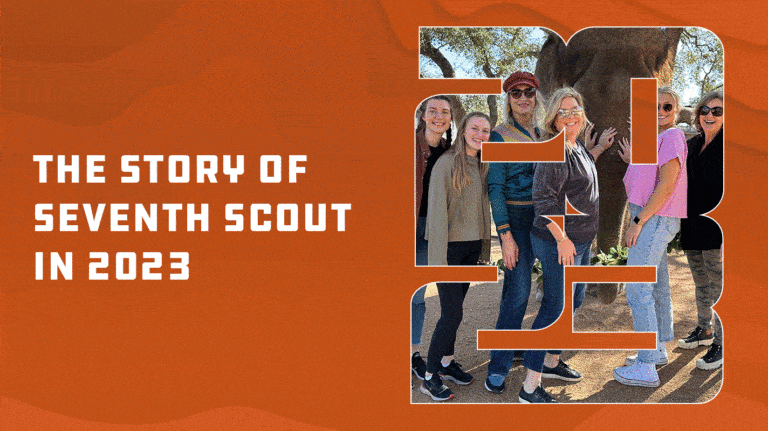We recently discussed the Value of Design for Business here on the Seventh Scout blog. In that post, we explored the role of design as a crucial and highly visible component of your company’s brand and reputation. Since design IS communication, today, we’re going to let you in on four pieces of communication advice that your graphic designer might be afraid to give you. The reason they might be afraid to tell you these things is that so often, business owners, marketing folks, and clients, in general, ask their designers to do the exact opposite of the four things we’re about to discuss.

1. White space is your friend.
There’s a natural tendency for your company to want to make the most of every communication opportunity. One request every designer has heard a million times is to make the logo bigger. Now, it’s true your company’s logo should be large enough to be readable. There are times when your logo may be the most important element of a designed piece of communication. Still, more often than not, it’s better to allow your logo and other design elements to have some breathing room instead of filling every inch (or pixel) with branding and messaging. The empty space around a logo, or other design elements, is like an invitation to the reader’s eyes to explore the layout and visually engage with the design. Overwhelmingly large logos are like an ALL CAPS email. Why you yellin’, Magellan?
2. You’re probably not your target audience.
This is a tough one. We’re all familiar with the old saying “the customer is always right,” and designers want to please their clients because happy clients mean getting paid – and hopefully getting hired for more work. But sometimes, clients forget about the end-user (their target audience) when they evaluate and provide feedback on designs.
In a perfect world, you’d personally LOVE the design of your company’s communication materials. But it’s more important that the design resonates with your audience than it is for it to have your favorite color in it. The morals of the story are: always remember your target audience, and ask your designer to explain and defend their designs instead of saying “yuck, not the green one.”
3. The more you say, the less you say.
This one goes back to the first item on our list and our natural tendency to make the most of each communication opportunity. Why is it so challenging to find Waldo? It sure as heck isn’t because he’s dressed inconspicuously. I mean, what’s the deal with that hat? And red and white stripes were soooo last year. The challenge is that Waldo is in a crowd with lots of competing colors and patterns.
Focus on the most important message(s) in your communication materials instead of trying to cram in lots of information – even when there seems to be room for it. This will help you deliver a clear and concise message to your audience. And it’s not just the amount of content that matters. Formatting and appearance of the content within the design are just as important. Just think: if everything is in large, bolded text, how will your audience know which message is the most important one?
4. Prepare to be bored.
Design updates and refreshes are exciting for designers and clients alike. But consistency and familiarity are crucial aspects of nurturing your potential customers. The advice here is to be patient and stick with a design theme and/or a campaign until you’re sure it’s run its course. You might get tired of seeing the same photos or the same design details, but it’s important to remember that your target audience isn’t “living with it” the way that you are. They need to see something repeatedly to become familiar with it and equate it with your brand.
By all means, change up the design of your materials when it’s clear that the design isn’t working anymore. And indeed, change the design if it becomes clear something about the design is an actual liability. (Say, honey, isn’t that the photo in this ad for hemorrhoid cream the exact photo you have on your homepage?) Otherwise, stay the course and focus on building a solid, trusted brand presence through the design of your materials.
The creatives here at Seventh Scout aren’t afraid to tell our clients what they need to hear. Get in touch with us if you need design that makes an impact on your audience.



